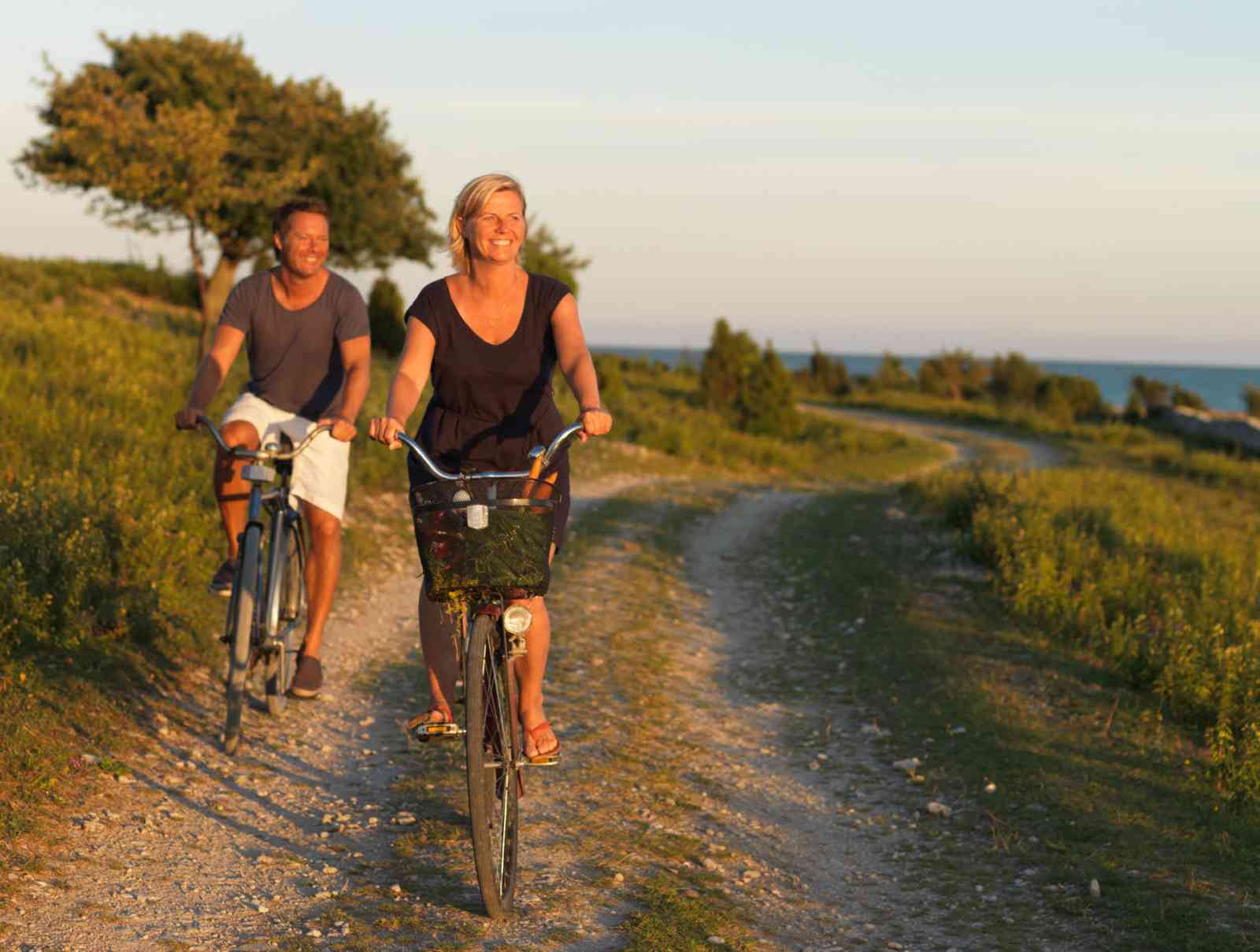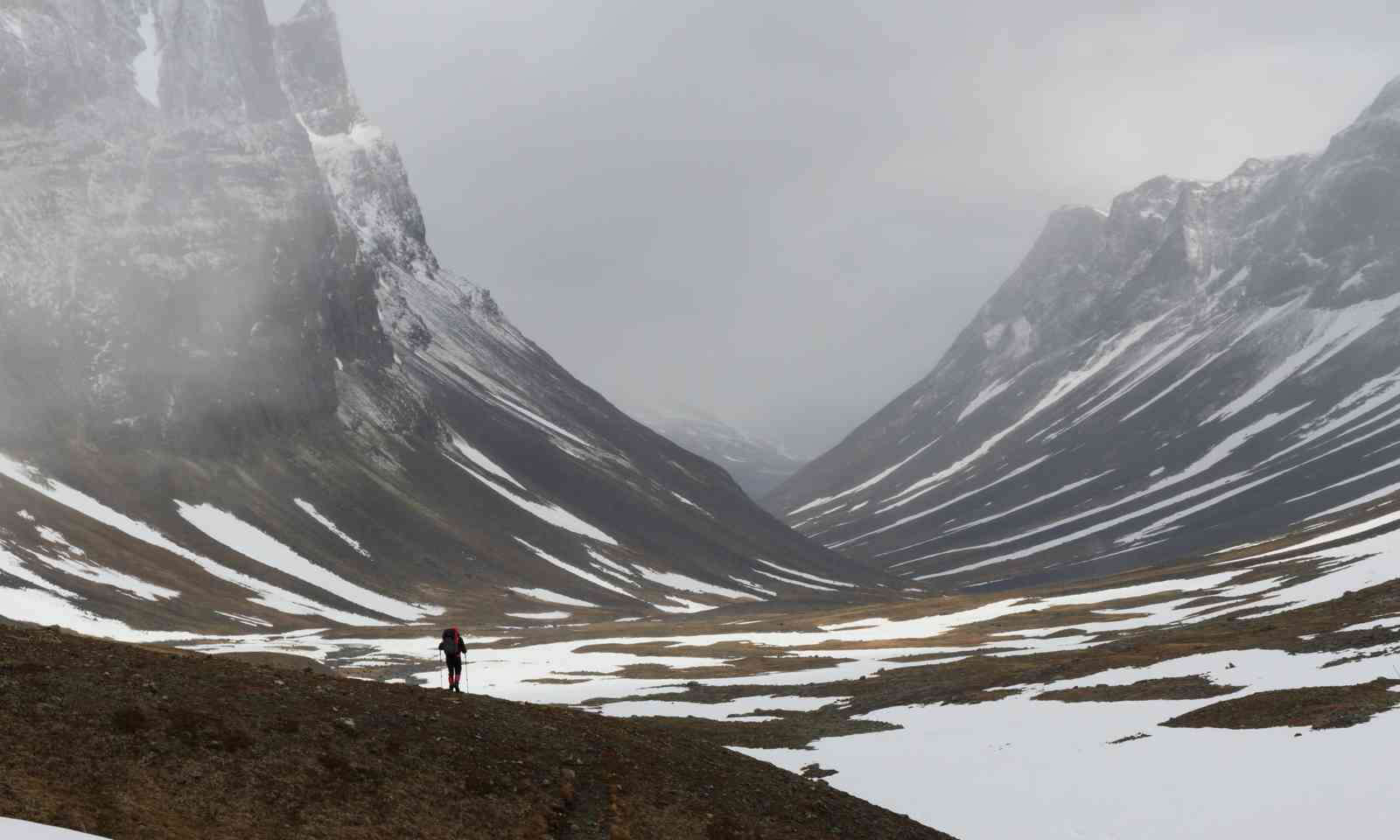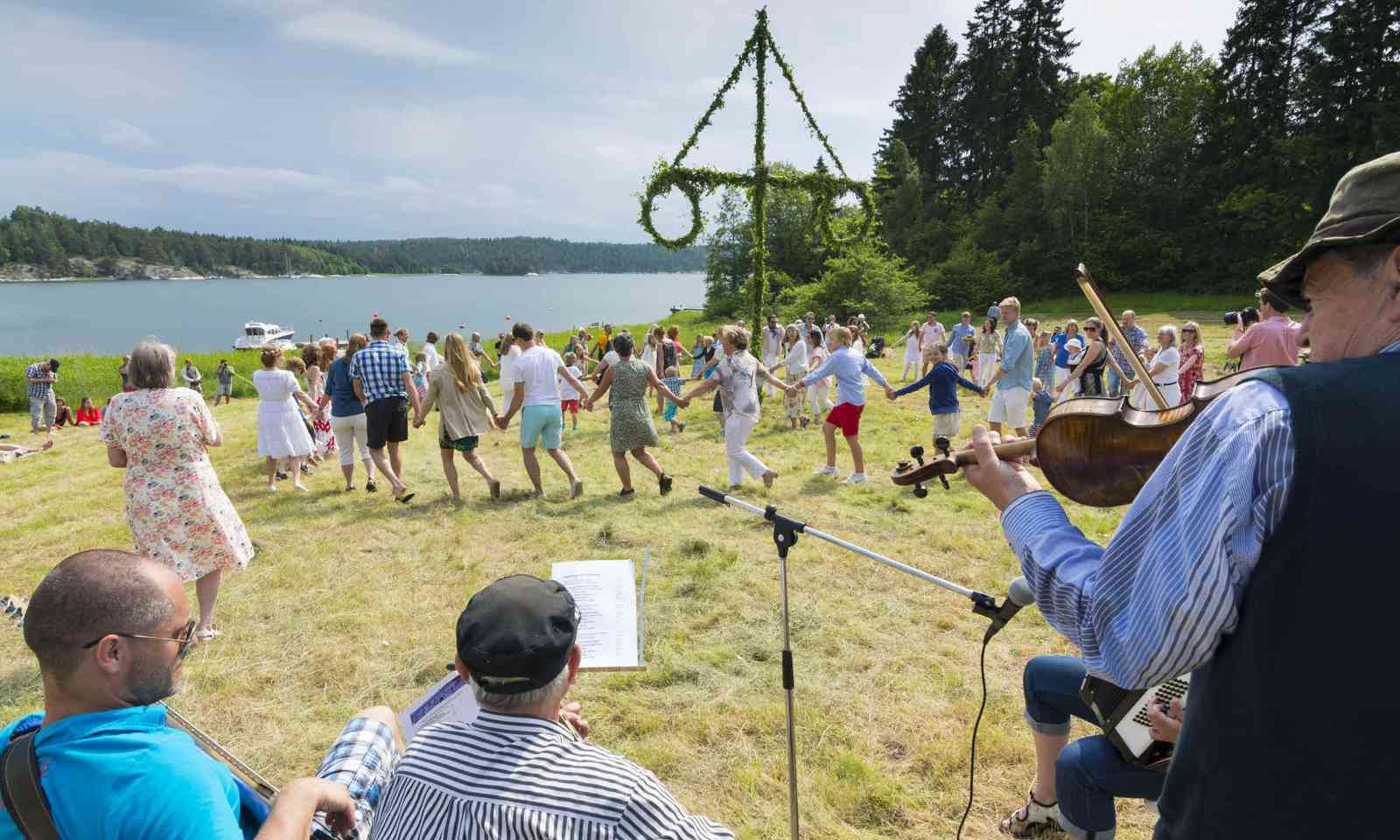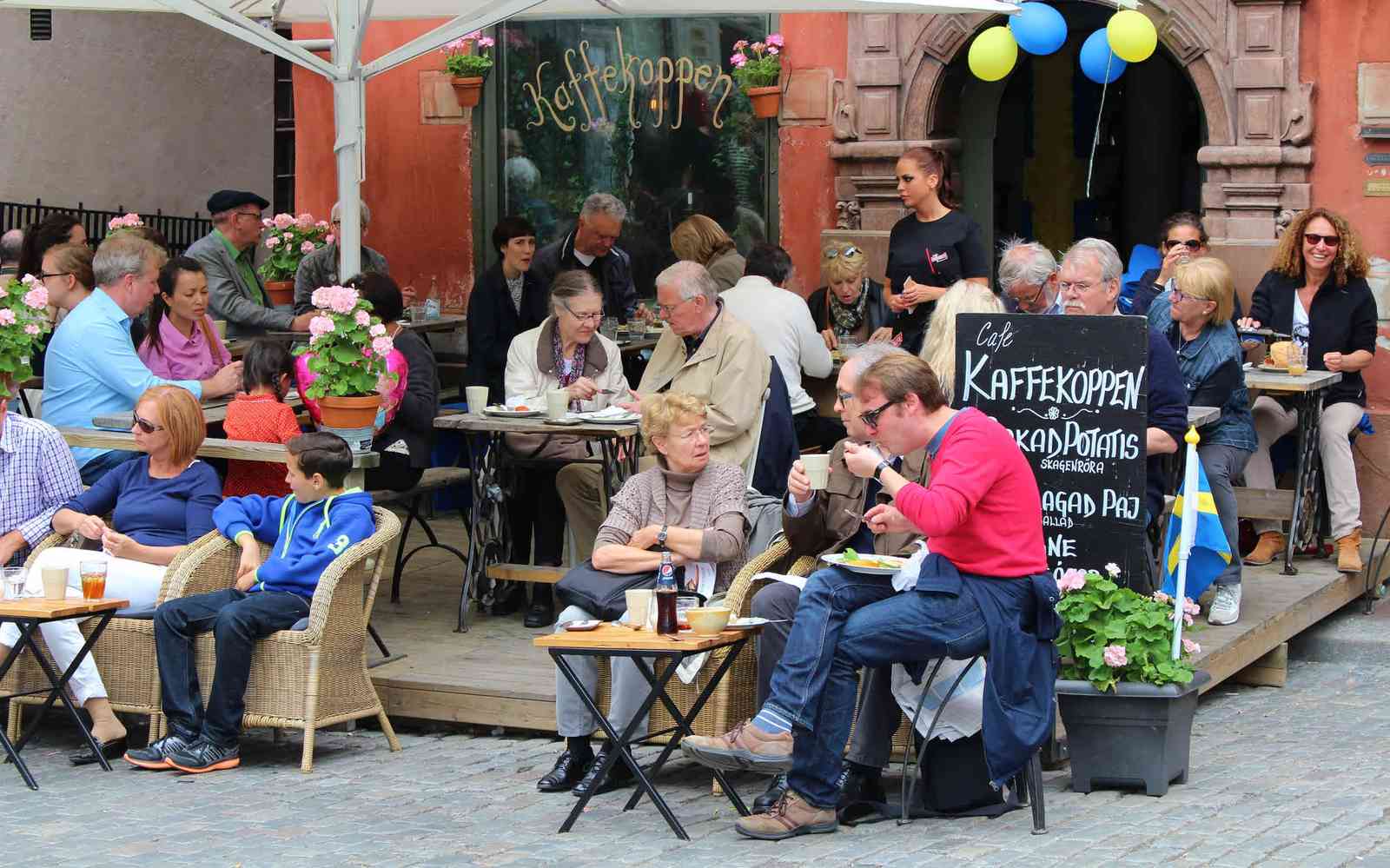1: Ride through history on two wheels 
Cyclists in Gotland (Michael Jonsson)
Sweden's biggest island, Gotland is known as ’the Island of churches’, with approximately 100 medieval churches spread around the island. In northern Europe, you wont find a place with more churches from the Middle Ages in such a small area. Today, they're open for visitors over the summer months, from mid-May to late August.
Stone ship settings, the remains of hilltop fortresses and burial mounds, as well as UNESCO’s first World Heritage Site — Visby’s city wall with church ruins and more than 40 towers — can all also be found on the island. 'Treasure island' is another name Gotland goes by and it is no wonder why.
One of the most fun ways to appreciate Sweden’s historic regions is on two wheels. The quiet roads running from village to village attract tourists and Swedes from all over the country to take the ferry over to the 125km long and 55km wide island in the Baltic Sea, halfway towards Latvia.
There are many bike rentals shops in Visby, the island’s only town, and for the more adventurous it is possible to get camping equipment. Take advantage of Allemansrätten, the Swedish right of public access, and put up a tent in the forest south or east of town for a wilderness experience.
2: Take to the water in Stockholm 
Skating in Stockholm's archipelago (Dreamstime)
Even though Stockholm is built upon 14 islands, connected with 57 bridges, it’s the smaller islands scattered in the archipelago that call for many Stockholmers’ and tourists’ attention when summer approaches.
Stockholm's often referred to as the 'Venice of the North' or the 'City of islands', which is not surprising, considering one third of its area is covered by water .
Stockholm’s archipelago has varied trails for walking or cycling in forests, cliffs or beaches along the coastline. Even though many Stockholmers have their own boats, ferries and tour boats run all year round and it's easy for tourists to move from one island to another.
For a more peaceful experience, take a canoe or kayak out on Lake Mälaren.
3: Behold the Northern Lights 
Northern Lights in Abisko National Park (Dreamstime)
If you leave civilisation behind and go to the northwest corner of Sweden, to Lapland, you have a chance to see the Northern Lights, even if travelling on a tight budget.
In the more remote, wild part of the country, there's a small town called Abisko, surrounded by mountains and well known for it’s clear skies. Even though you can see the blaze of pale light green or pink in the sky in other towns in the north of Sweden too, like Kiruna and Luleå, Abisko is the best hot spot in the country to see the phenomenon.
Take a trip to the Aurora Sky Station in the National Park where a chairlift takes you up the observation tower for 360° views, where you can take amazing photos of the Aurora Borealis.
September to March is the best period to visit this remote part of the country to see the Lights. While in Lapland, you can also enjoy the rivers, lakes, forests, Arctic plains, mountains and glaciers, as well as winter activities like skiing, snowmobile tours and dog sledding.
4: Cross the country on an Arctic Trail 
Hiker in Lapland (Dreamstime)
Blue water, green forests and glaciated peaks can all be found in Sweden, and there are many hiking trails across the country to enjoy the diverse nature.
Explorers with limited time wont have a problem finding well-marked walking trails in most regions. In the south, for example, there is a popular 950km network of easier routes called Skåneleden.
For the more adventurous, the forests and mountains near the Norwegian border are perfect for a longer hiking trip. The trails are marked with cairns or red paint, while lodges and huts give shelter along the way. Even though the routes are used all year, the best weather conditions are between June to mid-September.
Want to spend longer time in Scandinavia and turn the trip into more than a Sweden adventure? Then the 800km Arctic Trail that connects Sweden, Finland and Norway may be something for you. The trails are above the Arctic Circle and if you take one of the routes on the easy-to-moderate King’s Trail,or Kungsleden, you will pass Sweden’s highest mountain Kebnekaise.
5: Tuck into seafood on the West Coast 
Swedish Crawfish party (Carolina Romare)
Being surrounded by water, the Swedes have learned to take the ocean's treasures and prepare them in unconventional ways over the years. Sour herring (surströmming) on crisp bread, raw salmon marinated in salt (gravlax), served with boiled potatoes and sour cream, or craw fish on its own are a few of the typically Swedish dishes you’ll find in the country.
The West Coast is the place that attracts most seafood-loving foodies. When the fishermen get into Smögen’s harbour, they unload their catches of fish, lobster and prawn, with fish auctions following. There are also a variety of fishing tours for those who want to get out on the water and catch their own lobster, crawfish or oyster in Göta Canal and the lakes in Skaraborg.
For vegetarians, restaurants Andum on Ostra Hamngatan and Solrosen on Kaponjargatan are both veggie- and budget-friendly.
6: Experience a Swedish Midsummer

Swedes celebrating Midsummer (Dreamstime)
It's a good thing the sun never sets on Midsummer, which takes place sometime between 20 and 25 June, because the day is packed with activities. It is a day for singing, dancing, drinking and eating.
Midsummer is always celebrated outdoors in peoples’ backyards, public parks, in summer houses or at Skansen. Girls and women run around with flowers in their hair and people eat traditional dishes like herring, boiled potatoes, salmon, meatballs and strawberry cake, while drinking shots (referred to as schnapps or nubbe).
Singing has a central role and the Swedes are fond of little songs before taking a nubbe, as well as while dancing and playing around the midsummer pole. Old and young alike play air violins, run from people pretending to be bears or jump like frogs on this special day.
7: Fika the Swedish way

Cafe in Stockholm (Dreamstime)
There's no shortage of cafes in Sweden. One of the Swedes favourite pastime activities isfika, a break to chat with mates while drinking coffee or tea and eating something sweet, like cinnamon buns, chocolate balls or gingerbread.
Many visitors in Stockholm go to the city’s old town, Gamla Stan, which charms with its narrow and twisting cobbled stone streets lined with historic buildings, restaurants and cafes.
Many locals would stay away from Gamla Stan and go to Södermalm instead to enjoy their fika. This part of town also tells stories about the past with wooden cottages and houses from the 1800s and 1900s that the working class once lived in. Today, it is the place for young professionals, with artists' studios, cafes and restaurants around most corners.
8: Enjoy a unique music experience 
Dalhalla (Dalhalla)
In Rättvik, in the middle of the country and about 3.5 hours with train from Stockholm, is Dalhalla, one of the most impressive music venues in the world. More than 100,000 people gather in Dalhalla’s natural amphitheatre when singers, dancers and choirs get on the acoustically designed stage.
Dalhalla gives a dramatic setting for opera performances, as well as other music shows that take place every summer in the old limestone quarry, which is surrounded by forest. About 20 to 25 events are held between June and September, when it is warm enough to sit outside and enjoy the atmosphere.
International artists, such as Neil Young has played in Rattvik, as well as many well known Swedish bands and artists like Mando Diao, Eric Gadd and Magnus Tingsek.
-
Main image: Walking through the forest in Sweden (Dreamstime)










